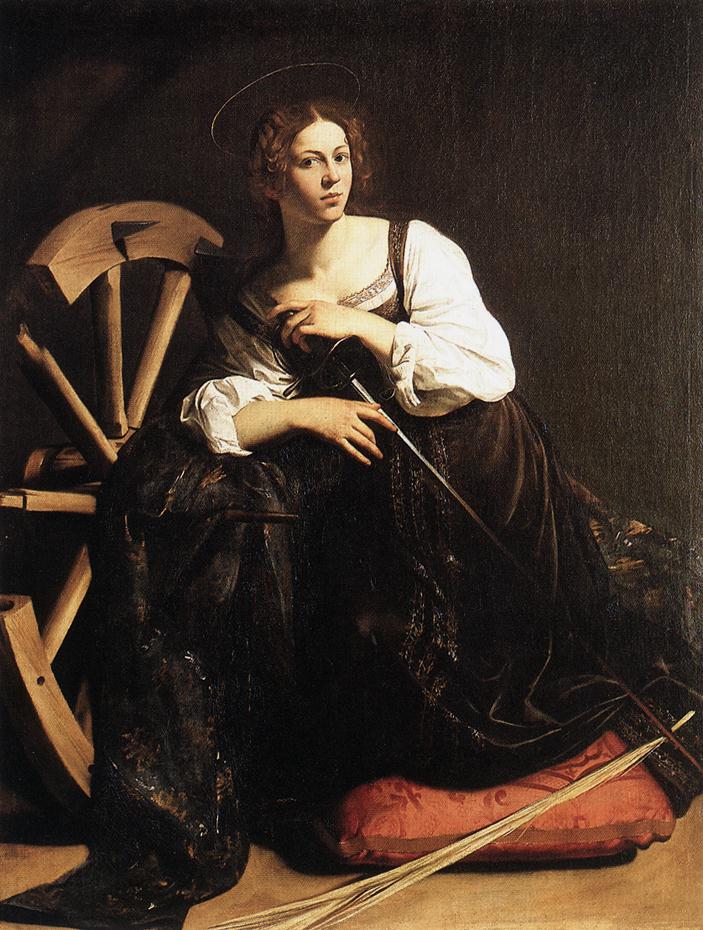- Saint Catherine (Caravaggio)
Infobox Painting|

title=Saint Catherine of Alexandria
artist=Caravaggio
year=c. 1598
type=Oil on canvas
height=173
width=133
city=Madrid
museum=Thyssen-Bornemisza Collection "Saint Catherine of Alexandria" (c. 1598) is an oil painting by the Italian
Baroque master Caravaggio. It is part of theThyssen-Bornemisza Collection ofMadrid . The painting formerly belonged to CardinalFrancesco Maria Del Monte , Caravaggio's first important patron.Saint Catherine of Alexandria was a popular figure in Catholiciconography . She was of noble origins, and dedicated herself as a Christian after having a vision. At the age of 18 she confronted theRoman Emperor Maximus (presumably this refers toGalerius Maximianus), debated his pagan philosophers, and succeeded in converting many of them to Christianity. Imprisoned by the emperor, she converted his empress and the leader of his armies. Maximus executed her converts (including the empress) and ordered that Catherine herself be put to death on a spiked wheel. The wheel reportedly shattered the moment Catherine touched it. Maximus then had her beheaded. She became patron saint of libraries and librarians, as well as teachers, archivists, and all those associated with wisdom and teaching, and all those whose livelihoods depended upon wheels. The year of her martyrdom was traditionally held to have been 305, (the year of a major persecution of Christians under Galianus), and her feastday was celebrated on 25 November. In 1969 the Church, persuaded by the overwhelming opinion of historians that Catherine had probably never existed, removed her from thecalendar of saints ; by 2002, while the historians had not changed their minds, the Church had, and she was reinstated. Her qualities are supposed to be those of beauty, fearlessness, virginity, and intelligence.Caravaggio shows Catherine with her symbols of martyrdom, the wheel and sword, as a single female figure in an interior devoid of architectural allusions. The image appears with a boldness and an immediacy that combine the nobility of the subject (St. Catherine was a king's daughter) with the almost plebeian pride of the model (she has been identified as Fillide Melandroni, a famous courtesan who frequented the palazzi of Del Monte and other patrons of the arts). The breadth of conception and realization, and the perfect mastery of a very difficult composition (the figure and objects completely fill the painting, in a subtle play of diagonals) are striking. Caravaggio here chose a "grand" noble approach that heralds the great religious compositions he would soon do for
San Luigi dei Francesi . The extraordinary virtuosity in the painting of the large, decorated robe is absorbed as an integral part of the composition. This is something his followers would not often succeed in doing, for they frequently dealt with the single components of the painting individually, with adverse effects on the unity of the whole.ee also
*
Saint Catherine of Alexandria (Raphael) External links
* [http://www.catholic-forum.com/saints/stc01ce.htm St Catherine from Catholic Encyclopedia (1908 edition)]
Wikimedia Foundation. 2010.
